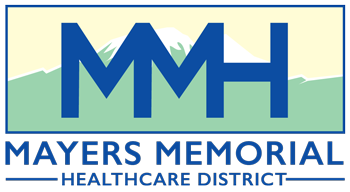A History Through the Decades
Mayers Celebrates 60 Years! 1956 - 2016
Mayers Memorial Healthcare District was first formed in the hearts and minds of Dr. and Mrs. Howard Mayers, who arrived in the Intermountain region in 1938. Like many country doctors, Dr. Mayers received much of his pay in produce and often gave up his own bed to a patient who needed care. Over the years, Dr. & Mrs. Mayers began to envision a hospital that would provide the needs of residents in these rural communities.
In 1951, Dr. Mayers held a meeting in his home to share his vision with local citizens. As he presented the benefits a local hospital would bring, it did not take long for key community leaders to join him in his vision. Enthusiasm spread very quickly and the community eagerly backed his plan. Only one month later, long before the hospital could become a reality, Dr. Mayers and his wife were killed in a tragic automobile accident. Broken hearted by the loss but motivated to carry on the dream, the residents of Fall River Mills and surrounding communities began to raise funds to build a rural community hospital in memory of Dr. and Mrs. Mayers. Anna McArthur, one of the community's local residents, donated land on which to build the hospital. Numerous residents joined forces to raise the funds necessary to realize their goal.
Mayers Memorial Healthcare District, like all California hospitals, was affected by the Seismic Safety mandate of 1994 (SB1953). This mandate was implemented in response to the 1994 Northridge earthquake in which two hospitals suffered major structural damage. It gave the state the authority to shut down acute care services if SB1953 requirements are not met in 2020.
The biggest obstacle to meeting these requirements was, of course, lack of funds. In 2001, Mayers Memorial Healthcare District converted to a Critical Access Hospital, which increased the reimbursement amount, and improving operations. The Board of Directors has recognized the need for a comprehensive strategic plan to address the mandates and regulations that could threaten the future of the District if nothing is done. The goal of the recently completed Master Facility Plan was to clearly address the pending seismic and retrofit issues and lay the foundation for the District's capital campaign to fund the comprehensive building reconstruction.














